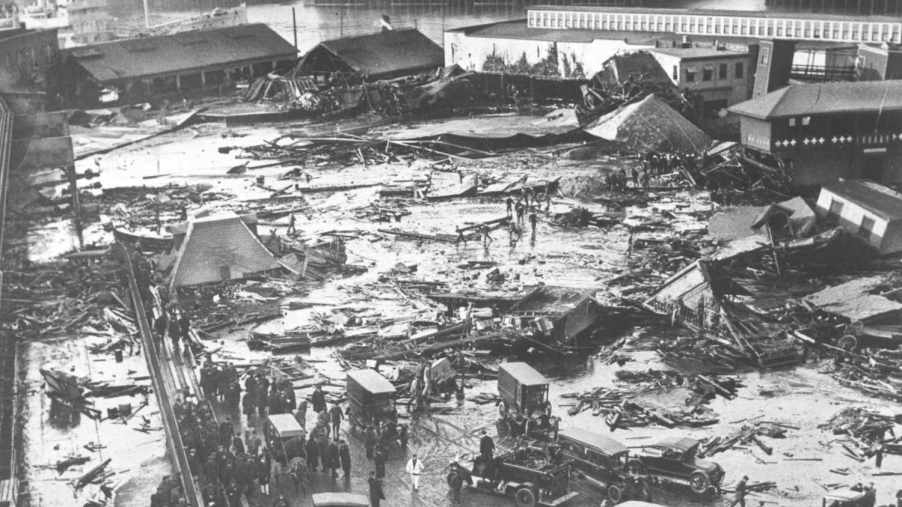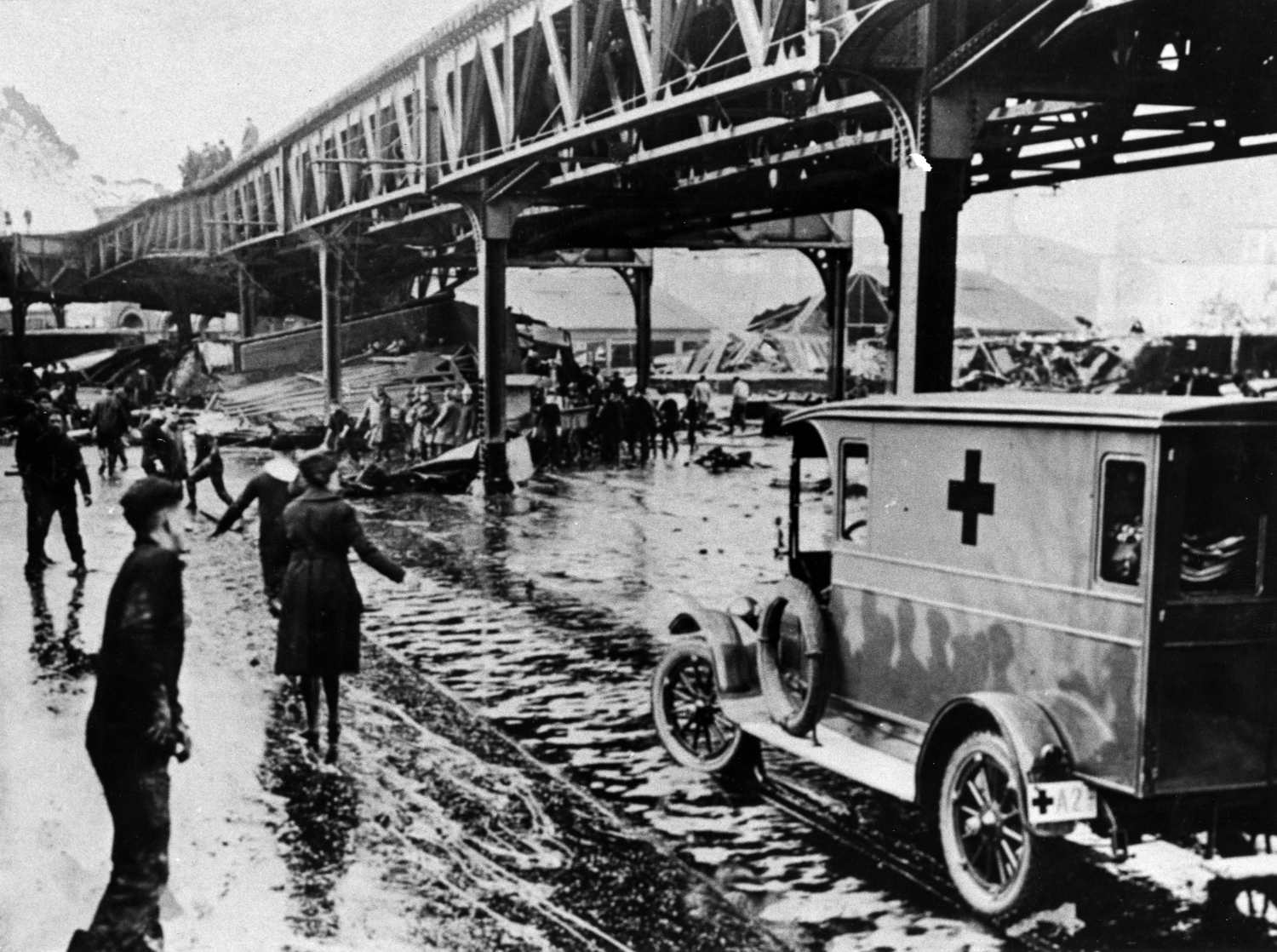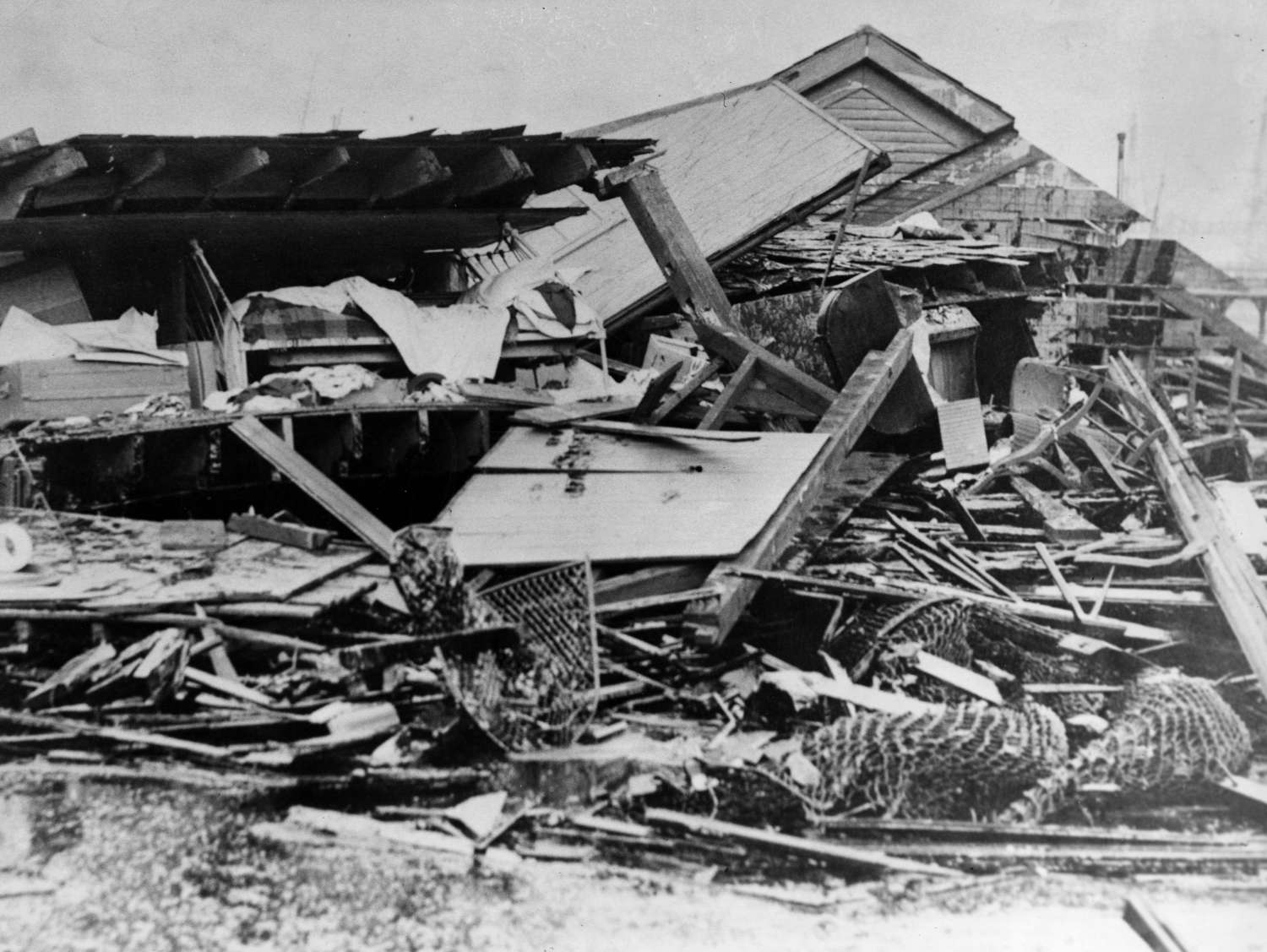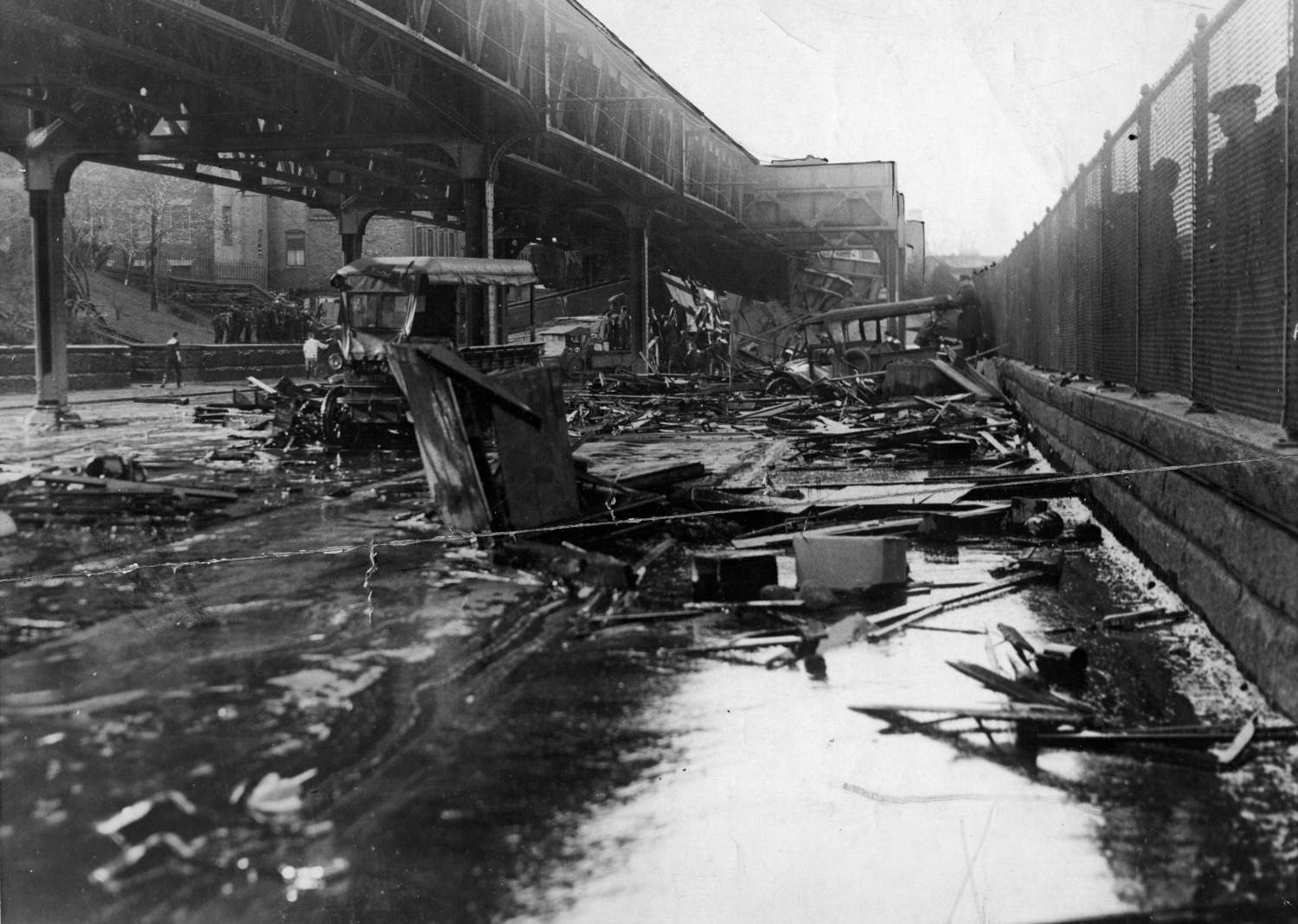
The Great Molasses Flood of 1919 Filled Boston Streets With 2.3 Million Gallons of Mayhem
In the history of the United States, only one significant accident resulted in a molasses flood. The Great Molasses Flood of 1919 killed 21 people and injured 150 more. Folklore says that residents could smell molasses for many years when the weather heated up. This historic flood took out cars and spread miles down the road within minutes, causing incredible damage around Boston’s North End.
How did the Great Molasses Flood happen?

The Great Molasses Flood started sometime in the afternoon of January 15, 1919, when a tank full of molasses burst in the streets of Boston. The tank was 50 feet tall and held more than two million gallons of syrup before it exploded, sending the sticky substance rushing through the streets of Boston, Massachusetts.
According to The History Channel, a few things contributed to the accident. The tank was built in 1915 when World War I was raging on. Industrial-strength alcohol was in high demand, and molasses offered a quick way to produce ethanol for alcohol. The United States Industrial Alcohol Company built the tank, but it wasn’t the highest quality.
At least one employee alerted higher-ups that the tank was leaking and looked unsound. Molasses spread onto the street more than once, and the company re-caulked the exterior and moved on. As the enormous tank sat on Commercial Street, families reported hearing noises from the container. Creaks, groans, rumbles, and other odd sounds became commonplace before the accident.
Boston streets were busy on the day of the Great Molasses Flood

On January 15, 1919, before the accident, the streets of Boston were full of people and horses. A nearby firehouse had some firemen outside eating lunch, and some children were nearby gathering firewood. The family home was nearby and overlooked the giant tank. At 12:40 PM, residents reported hearing a roar as the tank burst. It didn’t take long for molasses to fill the streets rapidly. Reports from The History Channel say the molasses moved at more than 35 mph as it flooded the streets. The 15-foot high wave of syrup trapped horses and people that were on the streets nearby, killing 21 people at the end of the day.
A nearby train platform constructed of solid steel supports was no match for the wave of molasses. The platform crumbled and took three individuals with it. One person near the platform suffocated in the molasses, and another died after the train car fell on top of him.
At the Engine 31 fire station, the Great Molasses Flood knocked the building off its foundation. The second story collapsed onto the first, and the force flattened a nearby house. Martin Clougherty was asleep on the third floor of a building when it collapsed in the flood, only surviving by climbing on top of his bed.
The Great Molasses Flood traveled over half a mile down Commercial Street, crushing buildings and anything else in its path. Since it was January, the molasses hardened on the streets as quickly as it flowed down them.
The company in charge of the molasses was found guilty

Once the dust had settled on the tragic flood, more than 119 lawsuits were filed against the United States Industrial Alcohol Company. Shoddy construction and bad materials were to blame, but the company claimed terrorists from Italy had sabotaged the container. Ultimately, the company was guilty of poor planning and lack of upkeep. Victims were awarded $628,000, around $8 million these days.
There were a variety of reasons that contributed to the Great Molasses Flood that day. Carbon dioxide buildup might have raised the pressure too high in the tank due to fermentation. That could have gone hand-in-hand with some rapid temperature changes. The investigation also showed the company skipped many basic safety tests while constructing the tank. Some residents would collect molasses from leaking areas to take home.
The Great Molasses Flood could have been prevented with some care and safety. Many new laws came about after the incident, providing better construction and more oversight by licensed engineers.



